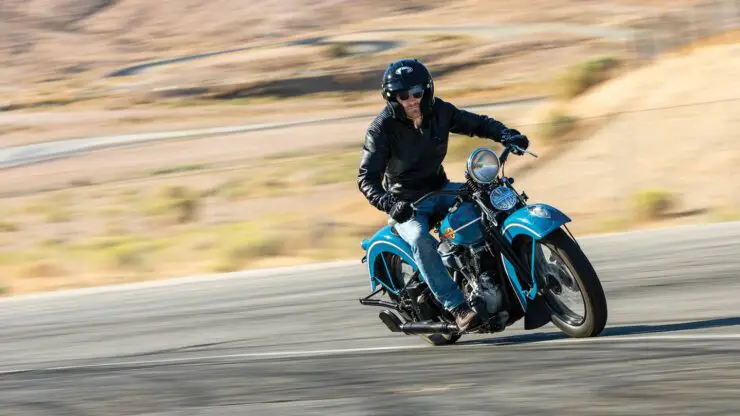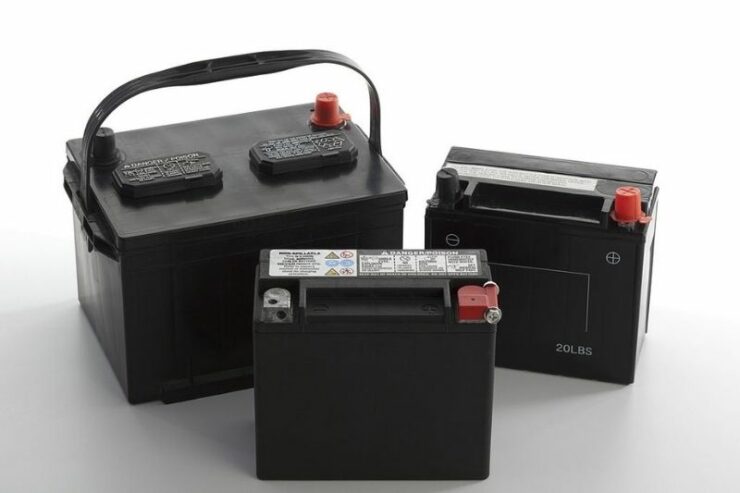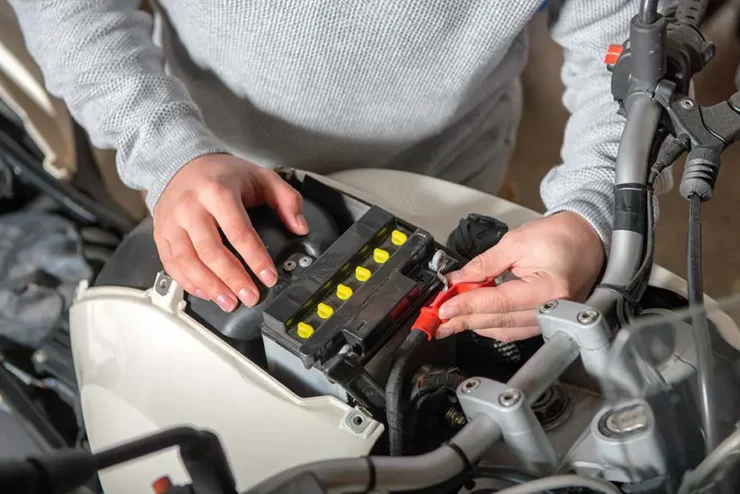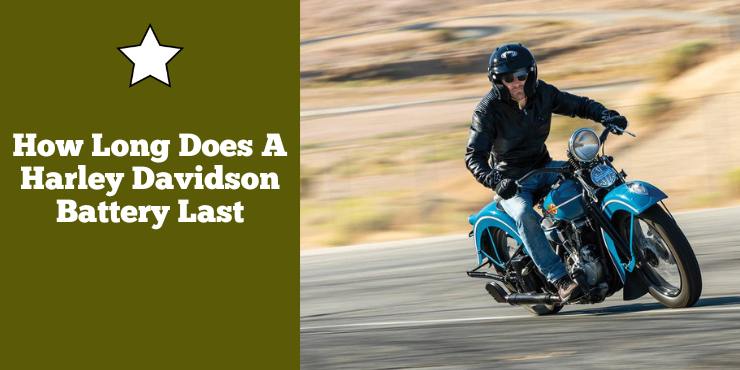Are you a Harley-Davidson fan looking for information about the battery life of your beloved motorcycle? Or maybe you’re just curious about the average lifespan of a Harley-Davidson battery? Either way, this article has got you covered! We’ll take a closer look at how long a Harley-Davidson battery can last and what factors can affect its lifespan. So if you’re ready to learn more, keep reading!
A Harley-Davidson battery typically lasts 3-5 years, depending on usage, climate, and maintenance habits.
What is a Harley-Davidson battery?
The battery is a vital component of any Harley-Davidson motorcycle. It serves as the power source for starting the engine and supplying electricity to various electrical systems. A Harley-Davidson battery is a rechargeable energy storage device that is specifically designed to meet the power demands of a Harley-Davidson motorcycle. These batteries come in different types, such as conventional lead-acid, lithium-ion, Absorbed Glass Mat, and more depending on the specific models and electrical system requirements.
>>> Click here to read our review of the Best Battery For Harley-Davidson <<<
Harley-Davidson batteries operate based on the principles of chemical reactions and electrical energy storage. Different types of batteries have different chemical compositions but they all involve two essential components – positive and negative electrodes (plates) and an electrolyte. In conventional lead-acid batteries, the positive plate is made using lead dioxide, the negative plate is made of acid, and the electrolyte is a solution of sulphuric acid and water. AGM batteries have a fiberglass mat saturated with the electrolyte between the plates, whereas lithium-ion batteries use lithium compounds in their electrodes.
When a Harley-Davidson battery is fully charged, the positive plate will contain an excess of lead dioxide (PbO2) whereas the negative plate contains an excess of lead (Pb). The electrolyte acts as a conductor, allowing the flow of ions between the positive and negative plates.
When the rider turns on the ignition key or presses the start button, a signal will be sent to the battery, activating the chemical reaction. The chemical reaction between the positive and negative plates releases electrons, creating an electrical current that flows through the motorcycle’s electrical system.
Once the engine starts running, the battery’s primary role shifts to supplying power to the motorcycle’s electrical systems. This includes lighting, indicators, fuel injection systems, audio systems, and other electronic components. The battery offers a steady stream of electrical energy to ensure these systems operate reliably.
While the engine is running, the bike’s alternator or charging system will take over the responsibility of charging the battery. The alternator will generate electricity, which is used for recharging the battery and power the electrical systems simultaneously. The charging system will help maintain the battery’s charge level and replenish the energy consumed during engine start-up and electrical system operation.
Proper maintenance and care will be needed for ensuring the longevity and optimal performance of your Harley-Davidson battery. This includes following recommended charging practices, checking the battery’s fluid levels periodically, cleaning terminals, and more. With regular maintenance and usage within its intended specifications, a Harley-Davidson battery will last several years before requiring replacement.

How long does a Harley-Davidson battery last?
There is a common motorcycle saying that goes like “Nothing is harder to start than a motorcycle on display to a prospective buyer”. However, there is one thing that is even harder, having an unreliable battery on your Harley-Davidson bike.
One of the most vital elements of a Harley-Davidson motorcycle is the battery. When you’re choosing one, you must go for the best. Interestingly, not all motorcycle batteries are created as equals. Imagine waiting days for the weekend to arrive so that you can ride your Harley-Davidson bike all day only for the battery to die on you. This is where it’ll be helpful to know how long does a Harley-Davidson battery last.
On average, Harley-Davidson batteries are known to last between two to seven years before they require replacement. Usually, Harley-Davidson batteries last a very long time. Most Harley-Davidson riders replace their batteries once every two to seven years in general. However, some factory-manufactured Harley-Davidson batteries can last between 9 to 15 years if looked after and maintained properly. If you don’t take care of the battery, it could die in less than a year. Defective batteries won’t last very long and can end up dying in just a few months, if not less.
Many factors considered, a properly taken care of and well-maintained Harley-Davidson battery will give you a service of not less than 5 years. You should remember that motorcycle batteries don’t rest. Even when you’re parking your bike, the battery will continue to discharge. If it happens for too long, the battery can end up getting damaged permanently. However, you can prevent it from happening by ensuring that you plug your Harley into a Harley-Davidson Battery Tender. This is a maintenance-type charger that charges your bike’s battery at the recommended rate while also preventing over-charging.
Factors that affect battery life of your Harley-Davison battery
The battery is one of the key components of any Harley-Davidson motorcycle, supplying the electrical power required to start the engine and power different electrical systems. For ensuring optimal performance and longevity of your battery, it’ll be important to understand the factors that can affect its lifespan. By being aware of these factors and taking appropriate measures, you’ll be able to maximize the battery life of your Harley-Davidson motorcycle. Here are some of the factors that influence the battery life of your Harley-Davidson battery.
#1. Quality of the battery
The quality of the battery itself will play a major role in its lifespan. Investing in a high-quality battery from a reputable brand like Harley-Davidson will ensure better construction, superior performance, and more reliable components. Choosing a battery designed specifically for Harley-Davidson motorcycles increases the likelihood of a longer lifespan and optimal performance.
#2. Battery type
The type of battery you choose from your Harley-Davidson motorcycle can impact its lifespan. Conventional lead-acid batteries, lithium-ion batteries, and AGM batteries have different characteristics and lifespans. While lead-acid batteries do require maintenance from time to time, lithium-ion and AGM batteries are typically maintenance-free. You should consider your specific requirements, budget, and desired maintenance level when choosing the battery type that suits your needs.
#3. Riding habits and frequency
Your riding habits and frequency can greatly affect your battery life. Regular use and longer rides will allow the battery to charge fully and maintain its charge. Short, infrequent rides or extended periods of inactivity can result in insufficient charging or excessive discharge, which can reduce battery life. If you’re not going to ride your bike for an extended period, you should consider using a battery maintainer to keep the charge level stable.
#4. Extreme temperatures
Extreme temperatures, both hot and cold can greatly impact battery performance and lifespan. High temperatures accelerate the chemical reactions within the motorcycle battery. This results in faster degradation and potential fluid evaporation in lead-acid batteries. Extremely cold temperatures can reduce the battery’s capacity and make it more difficult to start the engine. When possible, you should park your bike in a sheltered area away from direct sunlight or extreme cold for minimizing the impact of temperature extremes.
#5. Electrical accessories
The electrical accessories and aftermarket components you add to your Harley can affect the battery life. Additional accessories draw power from the battery, placing increased demands on its capacity. If you have multiple electrical accessories installed, you should consider upgrading to a higher-capacity battery or consult with a professional to ensure that the combined electrical load doesn’t exceed the battery’s capacity.
#6. Age of the battery
Like all other components, batteries also experience wear and tear over time. The age of the battery itself is a significant factor in its lifespan. Most batteries have a lifespan of two to seven years depending on usage and maintenance. As your motorcycle battery approaches this timeframe, it is prudent to monitor its performance and consider replacing it proactively to avoid any unexpected failures.
#7. Maintenance and charging
Proper battery maintenance and charging practices are also important for maximizing its lifespan. Regularly inspect and clean the battery terminals, ensuring a clean and secure connection. Follow the manufacturer’s recommendations for charging, including using a compatible charger and avoiding overcharging. Proper charging practices will help maintain the battery’s charge level and prevent deep discharges that can shorten its lifespan.
By considering these factors and incorporating measures into your battery maintenance routine, you’ll be able to maximize the lifespan of your Harley-Davidson battery. Regularly adhere to proper charging practices and ride your Harley regularly to ensure optimal battery health and performance.

Different types of Harley-Davidson batteries
Harley-Davidson bikes are known for their distinct design, power, and performance. At the heart of these powerful machines lies the battery, which supplies the electrical power needed for starting the engine and powering different electrical systems. Here are the different types of batteries commonly used in Harley-Davidson bikes and their unique characteristics.
Conventional lead-acid batteries
Conventional lead-acid batteries have been the traditional choice for powering Harley-Davidson bikes for many years. These batteries consist of lead plates immersed in a sulfuric electrolyte solution. They are known for their durability, reliability, and cost-effectiveness. While they might require periodic maintenance, such as checking fluid levels and cleaning terminals, lead-acid batteries continue to be widely used and trusted for their ability to deliver consistent performance.
Lithium-Ion (Li-ion) batteries
With advancements in battery technology, some Harley-Davidson bikes have started featuring lithium-ion batteries. Lithium-ion batteries come with several advantages over traditional lead-acid batteries, including faster charging times, lighter weight, higher energy density, and a longer lifespan.
These batteries are capable of delivering reliable starting power even in extreme temperature conditions. They also come with a lower self-discharge rate, which means they’re able to hold their charge for longer periods. Even though lithium-ion batteries can be more expensive upfront, they offer enhanced performance and require minimal maintenance, which makes them an appealing option for bikers seeking advanced battery technology.
Absorbed Glass Mat (AGM) batteries
AGM batteries have gained popularity in recent years as their use in Harley-Davidson bikes has increased over the years. These batteries make use of a unique design that incorporates a fiberglass mat soaked in electrolytes between the lead plates. AGM batteries offer numerous advantages, including improved vibration resistance, maintenance-free operation, and enhanced resistance to acid stratification. They’re known for their long service life, exceptional reliability, and ability to deliver high-cranking power, which makes them an ideal choice for Harley-Davidson motorcycles.
It is worth noting that each battery type comes with its own advantages and considerations. Lead-acid batteries continue to be used and trusted widely for their reliability. AGM batteries offer improved performance and maintenance-free operation. Meanwhile, Lithium-ion batteries offer advanced technology with lighter weight and longer lifespan. Regular battery maintenance, regardless of the battery type, will be important for optimizing performance and longevity. This includes keeping the terminals clean, checking fluid levels, and following proper charging practices.
Benefits of using Harley-Davidson batteries
As mentioned above, a battery plays a significant role in the working mechanism of a Harley-Davidson motorcycle. It delivers reliable electrical power and allows different electrical systems within the bike to run. Choosing a Harley-Davidson battery designed specifically for these motorcycles offers a number of benefits. Here are some of the benefits of using Harley-Davidson batteries and how they affect your riding experience –
#1. Reliable performance
Harley-Davidson batteries are engineered to meet the rigorous demands of motorcycle riding. These batteries are designed and tested to provide reliable starting power, ensuring that your bike starts up smoothly and effortlessly. With a Harley-Davidson battery, you can have confidence in your motorcycle’s ability to ignite and power the engine consistently.
#2. Compatibility
Harley-Davidson batteries are specifically designed to match the electrical system requirements and fit seamlessly into the battery compartments of Harley-Davidson motorcycles. They are built to the highest standards and undergo rigorous testing to ensure compatibility, which makes installation hassle-free.
#3. Durability and longevity
Harley-Davidson batteries are renowned for their durability and long service life. Whether you opt for a lead-acid battery or go for an advanced AGM or lithium-ion battery, you can expect one that can withstand the demands of motorcycle riding. They’re designed to endure vibrations, temperature fluctuations, and the rigors of the road, providing reliable power over an extended period.
#4. High cranking power
Harley-Davidson batteries are engineered for delivering high-cranking power, allowing for quick and efficient engine starts. This is especially important when starting large-displacement engines commonly found in Harley-Davidson motorcycles. The batteries offer the necessary electrical energy to turn over the engine, ensuring a smooth and prompt start each time.
#5. Trusted brand and warranty
Harley-Davidson is a brand synonymous with quality and reliability. By choosing a Harley-Davidson battery, you can have confidence in the product’s performance and the backing of a trusted brand. Furthermore, Harley-Davidson batteries often come with warranties, providing added peace of mind and assurance of quality.
#6. Genuine parts
Harley-Davidson batteries are genuine parts designed specifically for Harley-Davidson motorcycles. Using genuine parts will ensure compatibility, reliability, and consistent performance. When you invest in a Harley-Davidson battery, you can trust that it has been engineered and manufactured to meet the highest standards set by the company.
#7. Maintenance options
Harley-Davidson offers a wide range of battery options to suit different preferences and riding styles. Conventional lead-acid batteries are a reliable choice and might require periodic maintenance, such as checking fluid levels and cleaning terminals. Alternatively, maintenance-free options like AGM or lithium-ion batteries offer convenience, eliminating the need for regular maintenance while delivering exceptional performance.
Choosing a Harley-Davidson battery specifically designed for your bike ensures optimal performance, reliability, and compatibility. By selecting a Harley-Davidson battery, you’ll be able to power your ride with confidence, knowing that it has been engineered to meet the unique demands of motorcycle riding.
Whether you prefer the classic reliability of a lead-acid battery or the advanced technology of AGM or lithium-ion batteries, Harley-Davidson offers a range of options to suit your needs. Consult your bike’s owner’s manual or seek advice from a professional technician or authorized Harley-Davidson service to ensure you select the right battery for your motorcycle model.

Maintenance tips for longer battery life of your Harley-Davidson battery
Maintaining a healthy battery is important for the reliable operation of your Harley-Davidson motorcycle. By following simple maintenance tips, you’ll be able to extend the lifespan of your Harley-Davidson battery and ensure optimal power and performance. Here are some of the valuable tips to help you maximize the battery life of your Harley-Davidson battery.
#1. Regular inspection and cleaning
Periodically inspect the battery for signs of corrosion or buildup on the terminals. Corrosion can hinder the flow of electricity and reduce battery performance. Using a battery cleaning solution and a wire brush or terminal cleaner will help you remove any corrosion or debris. Ensure that the terminals are clean and tight, providing a secure and efficient connection.
#2. Proper charging
Maintaining the battery’s charge level will be important for longevity. Follow the manufacturer’s recommendations for charging your specific battery type. Avoid overcharging as it could damage the battery. If you will be parking your bike for an extended period, consider using a battery maintainer or trickle charger to keep the battery charged and in optimal condition.
#3. Avoid deep discharges
Frequently discharging your Harley-Davidson battery to a low level can significantly reduce its lifespan. You should avoid leaving electrical components on when the engine isn’t running as this could drain the battery. If you notice the battery voltage dropping significantly during use, this is a sign that the electrical load is too high or the battery is nearing the end of its life. Minimize deep discharges to maximize battery longevity.
#4. Temperature considerations
Extreme temperatures can affect battery performance. During hot weather, make sure that your bike is parked in a shaded area whenever possible. Excessive heat can cause fluid evaporation and accelerate battery degradation. In colder climates, you should consider using a battery warmer or insulating the battery to improve cold-weather performance. Avoid subjecting the battery to extreme temperature fluctuations.
#5. Maintain a regular riding schedule
Regularly using your Harley-Davidson bike will help keep the battery charged and in good condition. Frequent, longer rides will allow the battery to recharge fully and maintain its charge level. If your motorcycle is going to be idle for an extended period, you should consider starting the engine and allowing it to run for a few minutes to recharge the battery.
#6. Follow proper storage practices
If you’re planning on storing your bike for an extended period, take proper precautions for preserving the battery. Fully charge the battery before storage and disconnect it from the motorcycle to prevent any parasitic drain. Store the battery in a cool, dry place, away from extreme temperatures and direct sunlight. Consider using a battery maintainer or periodic charging during storage to keep the battery in optimal condition.
FAQ
How long does a Harley Davidson battery typically last?
The life of a Harley Davidson battery depends on the type of battery used and the amount of use and care it receives. On average, a battery in a Harley Davidson should last between 3 and 5 years.
What are the signs of a failing Harley Davidson battery?
The signs of a failing battery in a Harley Davidson include a slow engine crank, dim headlights, and a loss of power when starting the bike. Additionally, the bike may not start at all or may not operate properly.
What can I do to extend the life of a Harley Davidson battery
To extend the life of a Harley Davidson battery, it is important to keep it clean and charged. Proper charging and maintenance can help keep the battery healthy and performing well for many years. Additionally, using a charging system to keep the battery charged when the bike is not in use can help prolong its life.
>>> Read more about Battery for Harley-Davidson <<<

